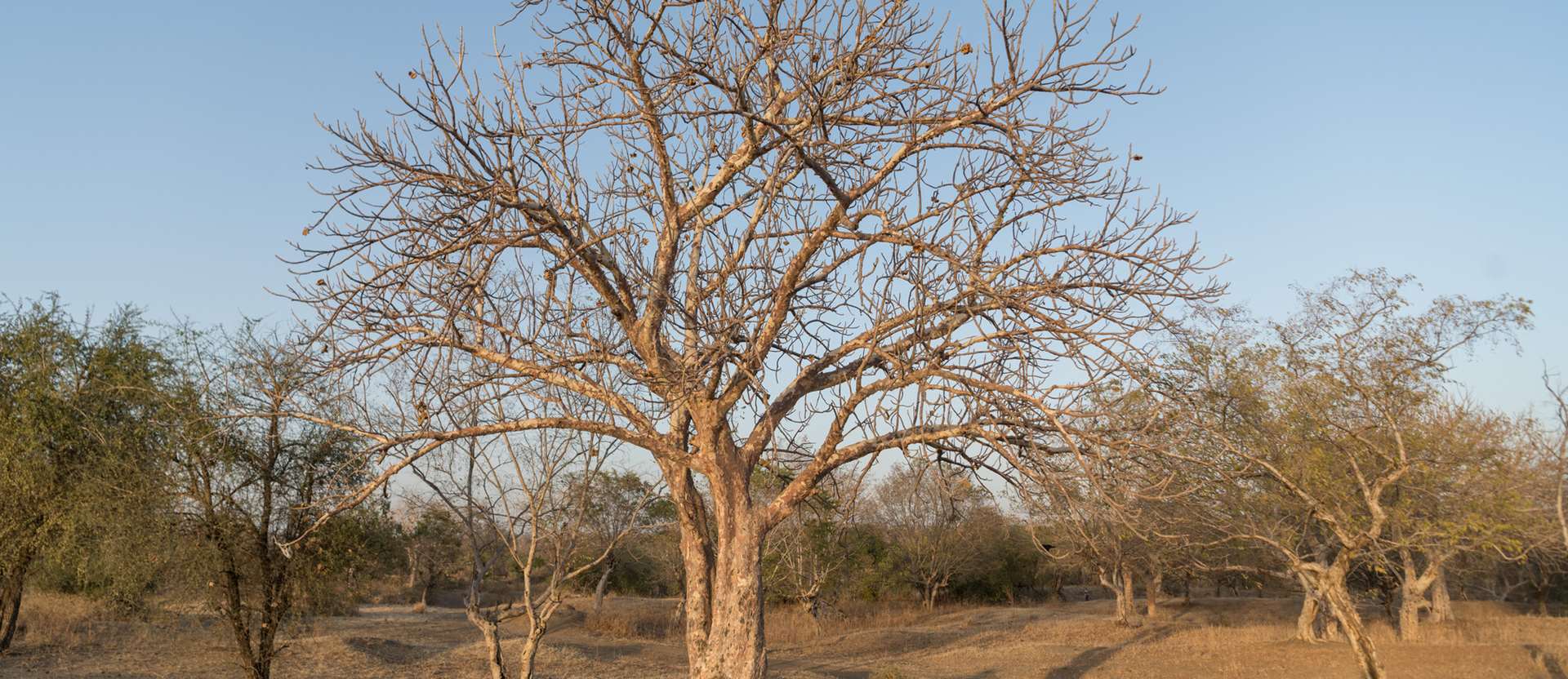
Tree Aid's Five favourite trees
'Tree Planting' vs 'Tree Growing' - Making the Right Choices
Tree planting is at the forefront of everyone’s minds right now and rightly so– but which trees should we be planting, and where should we be planting them?
In our work planting trees across Africa’s Sahel region, we embrace the mantra of “Right trees, right place, right reason.”
Every tree species we choose to plant is selected for its suitability for the communities and environment that we’re working with.
This is part of our goal to grow the Great Green Wall, one of the biggest ecological restoration projects in history!
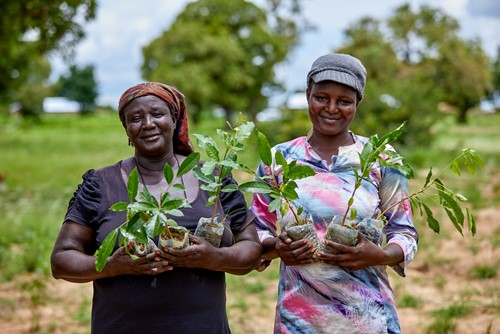
Photo: Lema Concepts - Women holding tree saplings - Navio, Paga, Ghana
At Tree Aid, we don't just plant trees and walk away; we prefer to think of ourselves as a ‘tree-growing charity’, taking steps to ensure trees continue to live healthily once a project has ended. Our tree-planting projects are designed with local communities to address their needs for increased income, climate resilience and access to nutritious food in a joined up way.
In short, this means planting the right trees in the right places, and ensuring communities feel equipped and empowered to take care of forests for generations to come.
Planting the right trees, in the right places:
Several questions must be considered when choosing trees for our programmes:
- Will the tree survive? Tree planting schemes across much of the world, from the UK to Turkey, have fallen victim to poorly thought-out tree planting schemes. Trees must be maintained throughout their life cycles, and in areas like the Sahel with increasingly harsh and unpredictable climates, it’s particularly important that varieties are chosen which can withstand extremes of drought and flooding.
- What economic value will the trees bring to the local community? At Tree Aid, it’s important that the trees we plant can help local people to develop sustainable sources of income. Non-timber forest products are the products from trees which don’t require deforestation (unlike timber and charcoal). Growing trees which produce leaves, nuts, seeds and oils which can be sold at market is an important requirement of approach towards building sustainable business.
- What nutritional value do the trees offer? Too much or too little rain, rising temperatures and poor-quality soil mean that many communities struggle to grow enough food in the areas where we work. This often means filling up on starchy food like rice and corn instead, which can lead to malnutrition and vitamin deficiencies, especially in children. We must therefore make sure we choose trees which can provide nutritious fruit, nuts and leaves. Planting trees which are both hardy and nutritious, means that communities can harvest stable supplies of food all year round, even when other crops fail in difficult conditions.
- What additional benefits can the tree provide for the environment? Whether offering a shady canopy for communities to gather, or restoring degraded soil, trees can serve a host of other benefits. For example, tree leaves can be mulched into a compost, an alternative to expensive fertilisers. Likewise, the deep roots of a well-chosen tree are a key tool in the fight again encroaching desertification, holding soil in place and bringing up water and nutrients for other crops to survive.
- Where does the tree species originate? The choice between whether to plant native or non-native trees is an important decision for any tree-growing programme. Across our projects, we grow a mix of indigenous and locally-adapted varieties and ensure we maintain a good diversity that works well for the land and for the communities that depend upon it.

1. Baobab
Baobab – Also known as the ‘upside down tree' for its peculiar shape, the majestic baobab tree is native to Madagascar, mainland Africa and Australia. Used for many centuries as a source of nutritious food and shelter, this tree is also fittingly known as the ‘tree of life’. The baobab’s spectacular fruit is a superfood, packed with vitamins, and its leaves are also widely used for medicinal purposes.
Tree Aid often plants baobab trees as part of our nutrition garden projects. These small areas of nutrient-dense plants can be harvested by the local community for food, or processed to sell. Baobab trees also provide shade as they have broad canopies, and they often serve as a meeting place for the community.
Photo: Lema Concepts Africa - Nakolo Union members picking baobab fruits, Grow Hope project, Ghana.
2. Moringa
Another common feature in Tree Aid’s community nutrition gardens across Burkina Faso is the moringa tree. After just three months of growth, their nutritious and edible leaves are ready to eat. Known as the ‘drought warrior’, this fast growing, drought-resistant tree is a perfect tool to help communities maintain nutritious diets in the face of a changing climate. Packed with vitamins, protein, iron, and calcium, planting the miracle moringa tree is an essential part of our food security and nutrition work.
Moringa facts! Did you know that moringa is also known as the 'drumstick tree'? Its long, slender seed pods hang down from its branches like drumsticks – these pods can be used in cooking and as a herbal medicine. Moringa roots also taste a little bit like horseradish!
Photo: Hamdia Traoré - Cooking moringa in Koulikoro, Mali.
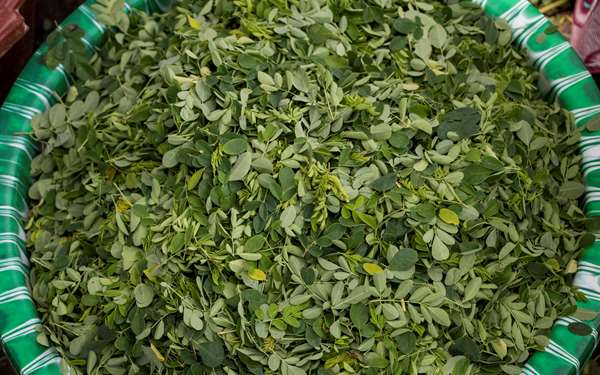
3. Shea
Known across the globe for its versatile nuts, which are turned into butter used in beauty products and cooking, the shea tree is another crucial plant for our work. Shea butter’s fantastic global reputation means these trees are a key generator of income across West Africa, particularly for women. Shea nuts can also be used as a food source for the communities that grow them.
Of the 16 million rural women in Africa for whom shea trees help contribute to household income, around eight million women live in West Africa.
Photo: Lema Concepts - Aweliwo Dichegidani with shea nuts, Grow Hope project, Ghana.
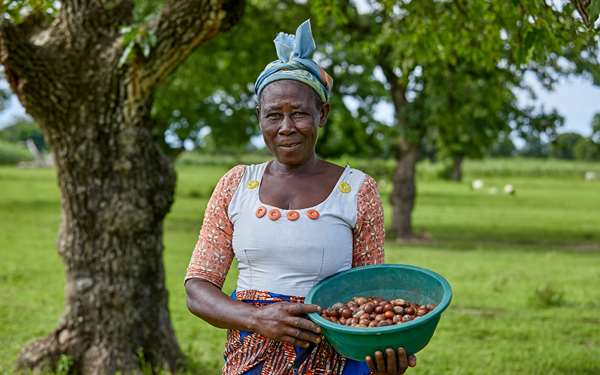


4. Boswellia (Frankincense)
Also high on the list of income-generating trees for those living in the areas where work, Ethiopia in particular, are Boswellia trees. Their resin, better known as frankincense, provides a vital source of income in northern Ethiopia.
Trees can be tapped and the resin sold for use in essential oils incense, soaps and perfumes. When cared for in sustainable ways, the harvest of frankincense from Boswellia trees offers a long-lasting means of income generation for communities – that’s why Tree Aid ensures training for local people to eliminate the risk of ‘over-tapping’ trees.
“Before the introduction of the project into the area, when they tapped frankincense trees, they didn’t consider the future sustainable utilisation of the resource… After the introduction of the project, we are using the tree properly and tapping in a proper manner - in a scientific way. As a result, the health of the frankincense bearing-tree is improving over time” – Yemataw Haile, Project Participant
Photo: Maheder Haileselassie - Derese Alebe and Yemataw Haile examine a damaged frankincense tree in Metema woreda, Ethiopia.
5. Cashew
Did you know that 57% of the world's cashew trees are grown in Africa? Cashew nuts are perhaps the most familiar crop produced from Tree Aid’s favourite trees; we mostly grow this species with communities in Ghana.
In cashew-harvest season the bright red and yellow colours of the cashew fruit can be seen all across the countryside. The nut is the part which sits underneath the bell-shaped fruit, whilst the pulp can be used to make jams, kebabs and other products.
Ideal for its ability to grow in poor soils, the cashew tree is a hardy crop that’s useful for farmers in Africa’s drylands. The roots of the tree help to stabilise soil, reducing erosion, which helps keep soils fertile, and the trees can be planted as part of an agroforestry system.
What Is Agroforestry?
Simply put, agroforestry means growing trees alongside your crops. In areas where droughts and flooding are frequent and crops often fail, nut trees can provide a more regular source of income. In Ghana, Tree Aid work with farmers to support them to process and earn an income from cashews trees.
Photo: Lema Concepts - Dabir Laar with cashew tree on his farm, Ghana.
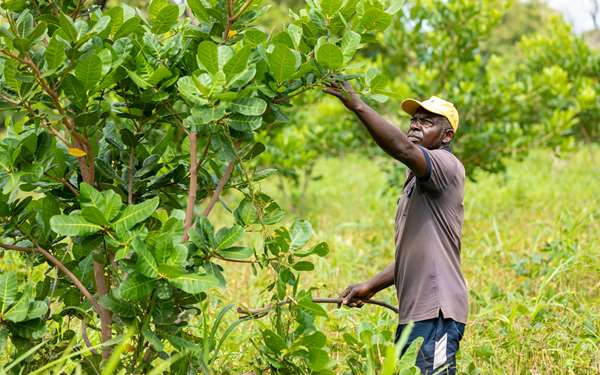
The right trees in the right place – growing the Great Green Wall:
All of Tree Aid’s projects across the Sahel contribute towards The Great Green Wall, Africa’s ambitious project to hold back the spread of the desert and protect communities against the impacts of climate change in the Sahel.
However, the Great Green Wall is not simply a solid line of trees that you might imagine from the name. Instead, picture a mosaic of many different areas of land restoration, each project rooted in the hearts of local communities. The mosaic is made up of projects like our own - designed with and by local communities to address their needs for increased income, climate resilience and access to nutritious food in a joined up way.
This means planting the right trees in the right places, and ensuring communities feel equipped and empowered to take care of forests for generations to come.






